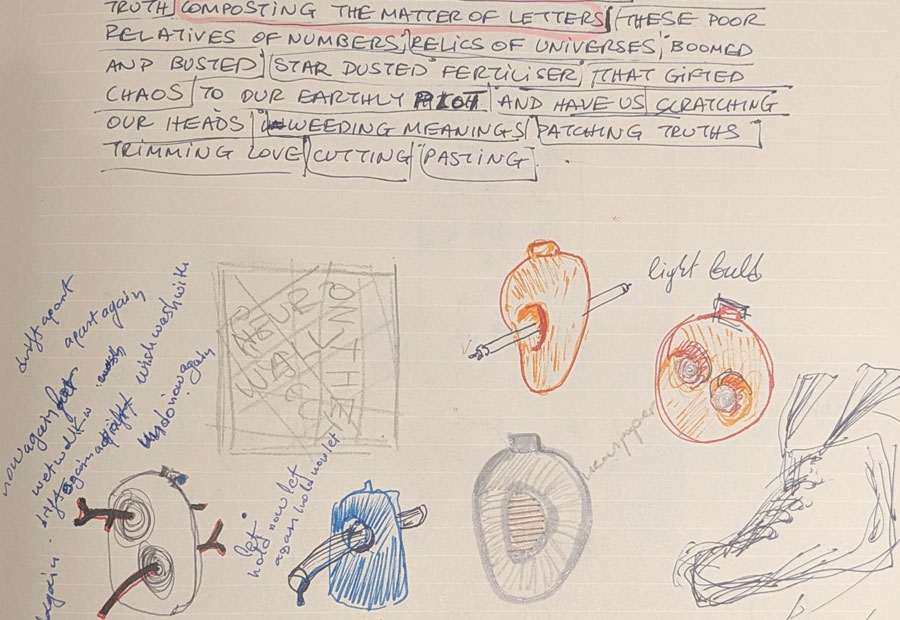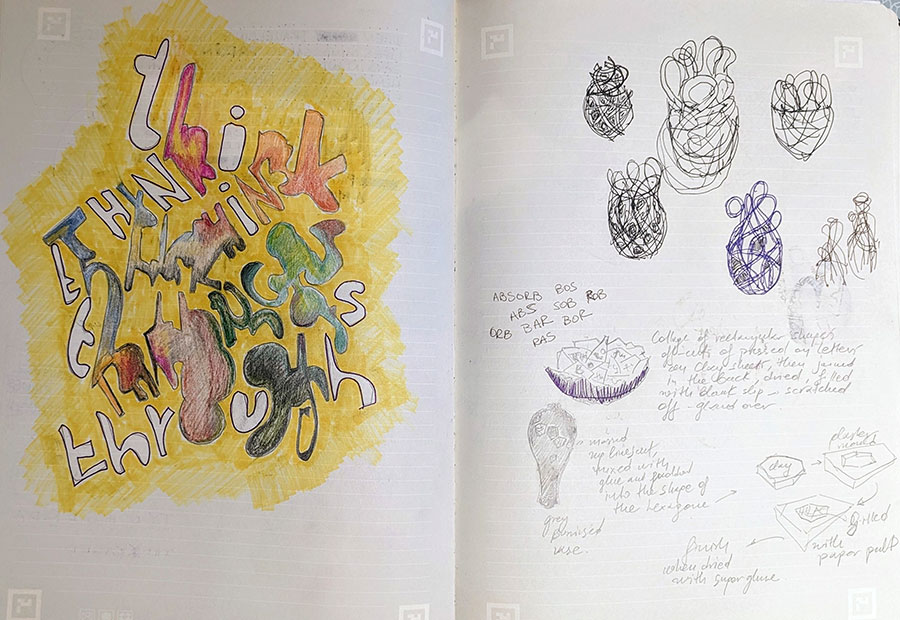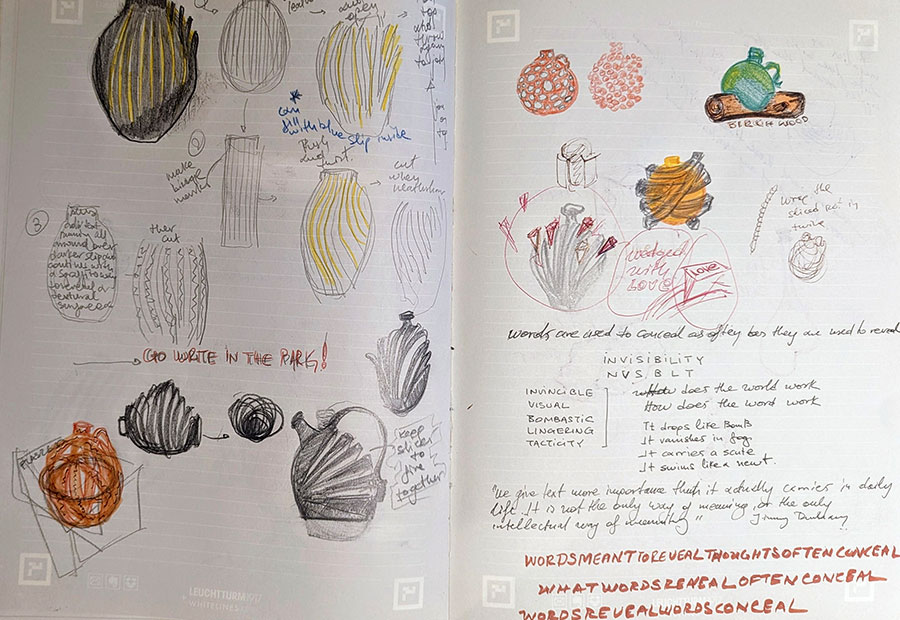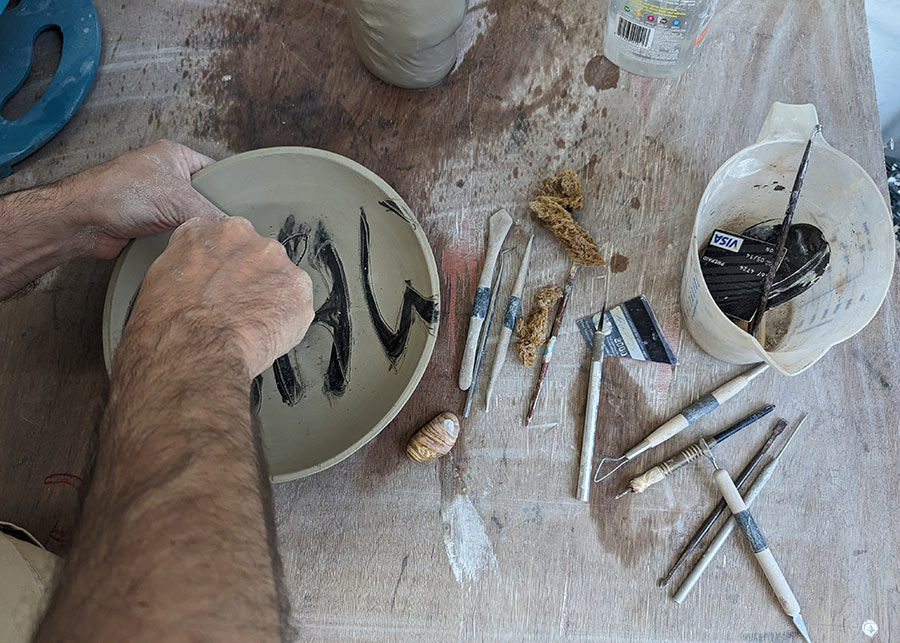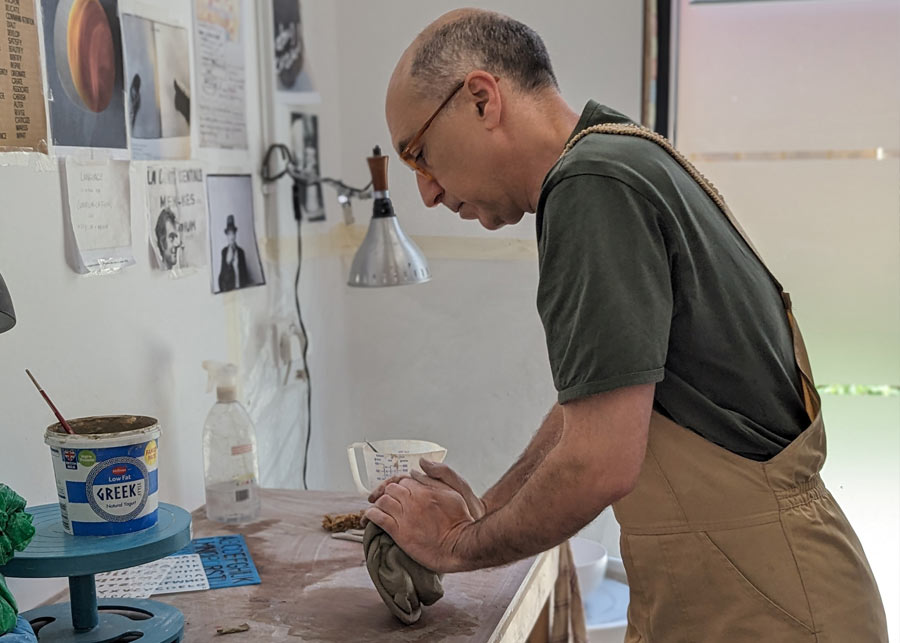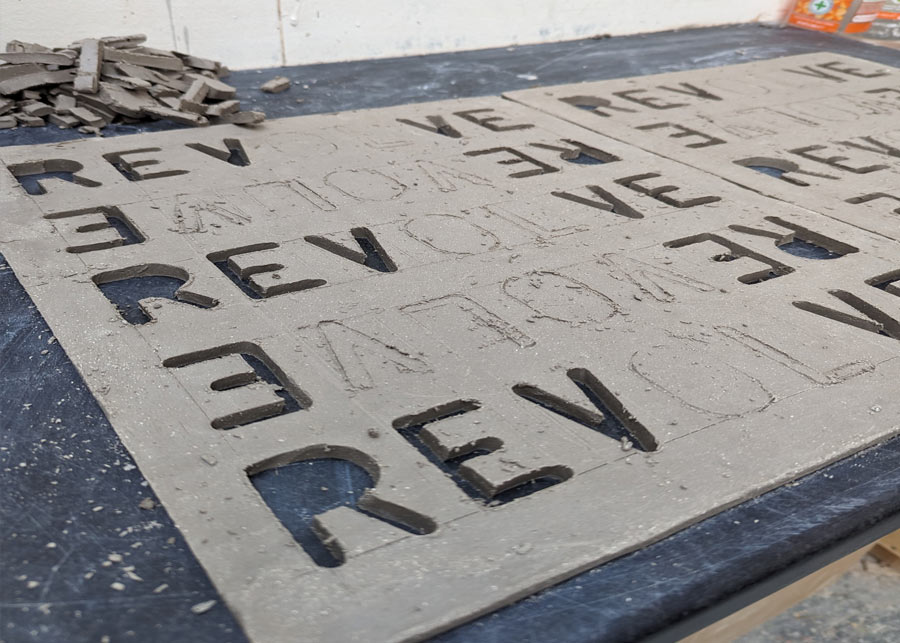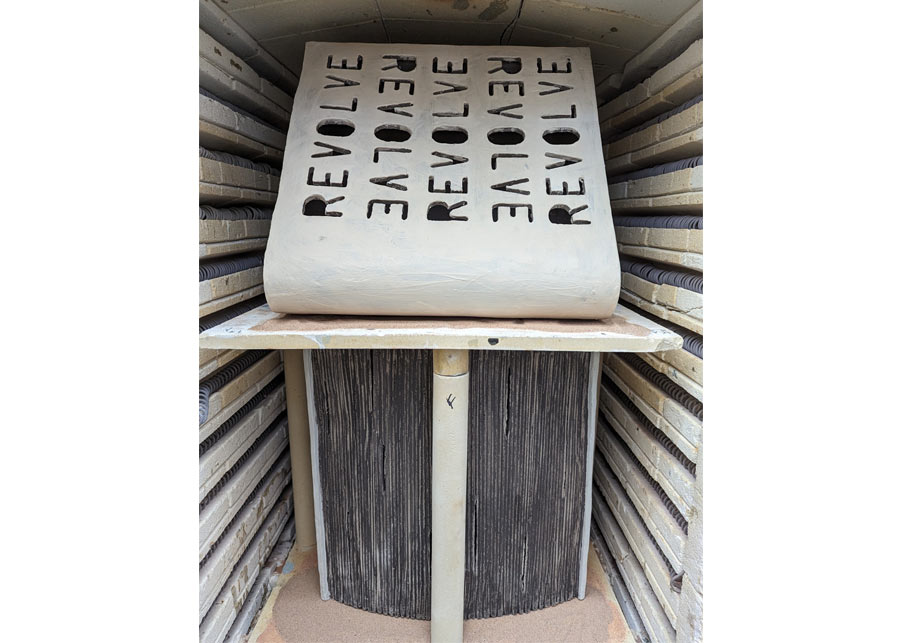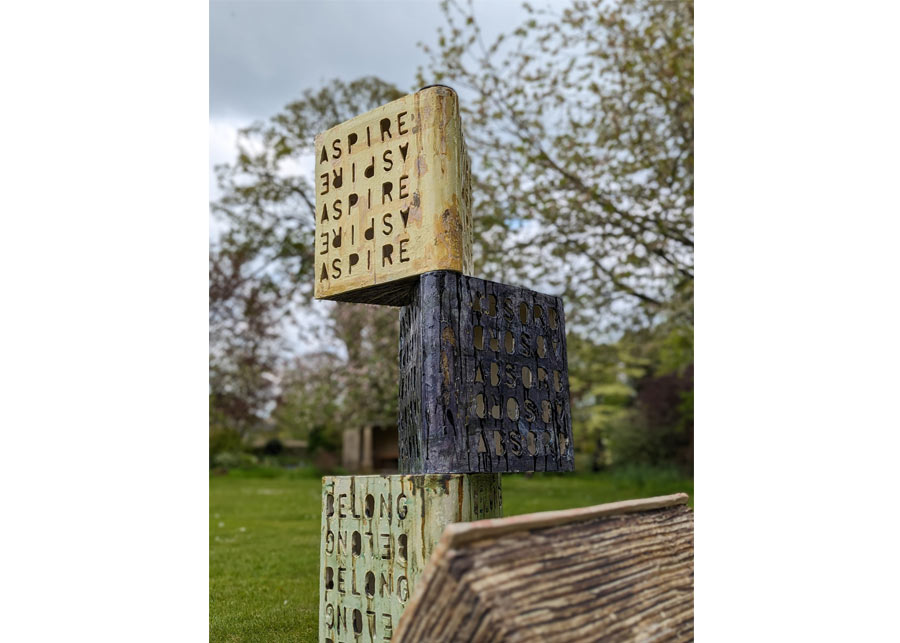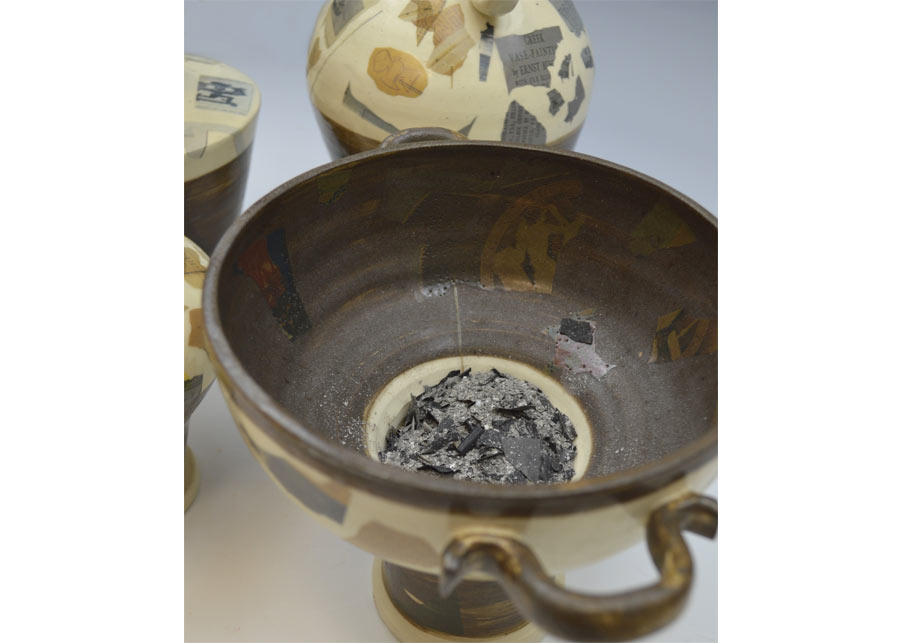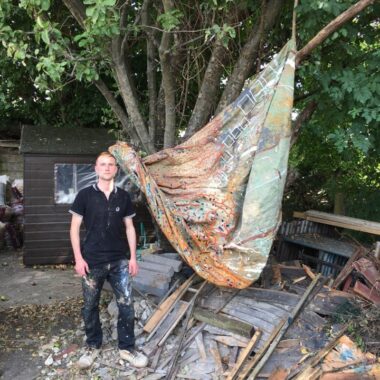Presenting a contemporary snapshot of the huge variety of approaches, materials and processes employed by The London Group artists. Edited by Sandra Crisp LG
Sandra Crisp LG: “Stathis’ artworks live in the area between handcrafted materiality and conceptual imagery. Trained as a potter, he uses a variety of throwing and hand building processes to produce ceramic sculptures. Using text and readymades in a playful way to create spatial metaphors and conceptual paradoxes.
“Transferring text onto wet clay slabs using stamps and stencils, then forming the printed slab into clay rings is just one of the many unique materials and processes utilised in your practice. Others include ceramic and basketball rubber for ‘Tarmak’ which was exhibited at The London Group Open 2023. And, ‘Unfurled’ in Discerning eye show last year uses ceramic and fine strips of printed text on paper.
“I will be really pleased to hear more about your ideas and the way you expand these using diverse ceramic sculptural process.”
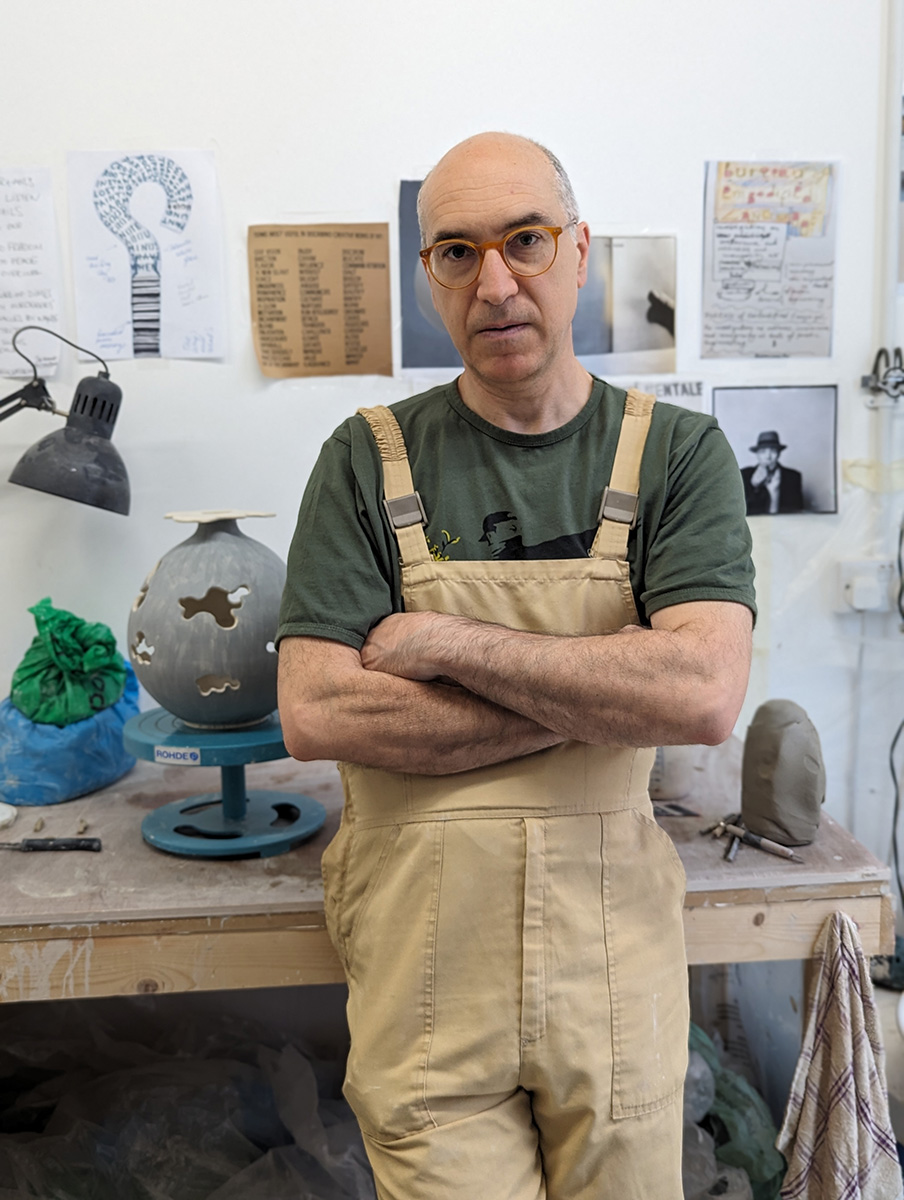
How I do what I do is very much driven of what I want to achieve. Sometimes it can be a very specific object which is stuck in my head and needs to get out. Most of the times it’s a concept that I find intriguing and feel the need to turn into a real thing. And occasionally it’s pure, playful experimentation without a purpose. I am not a believer of spontaneity and intuition, although I do tend to trust my hands when it comes to reading forms, surfaces, and textures.
My making process usually starts with a concept that I encounter through reading that sparks my interest because it can trigger a visual, physical, or spatial manifestation that I can twist and re-interpret. This could be anything from a fascinating word, a saying, a metaphor, a verse of a poem or even a slogan. I am lucky that I can also dip into the richness of the Greek language and use words outside their commonly used context.
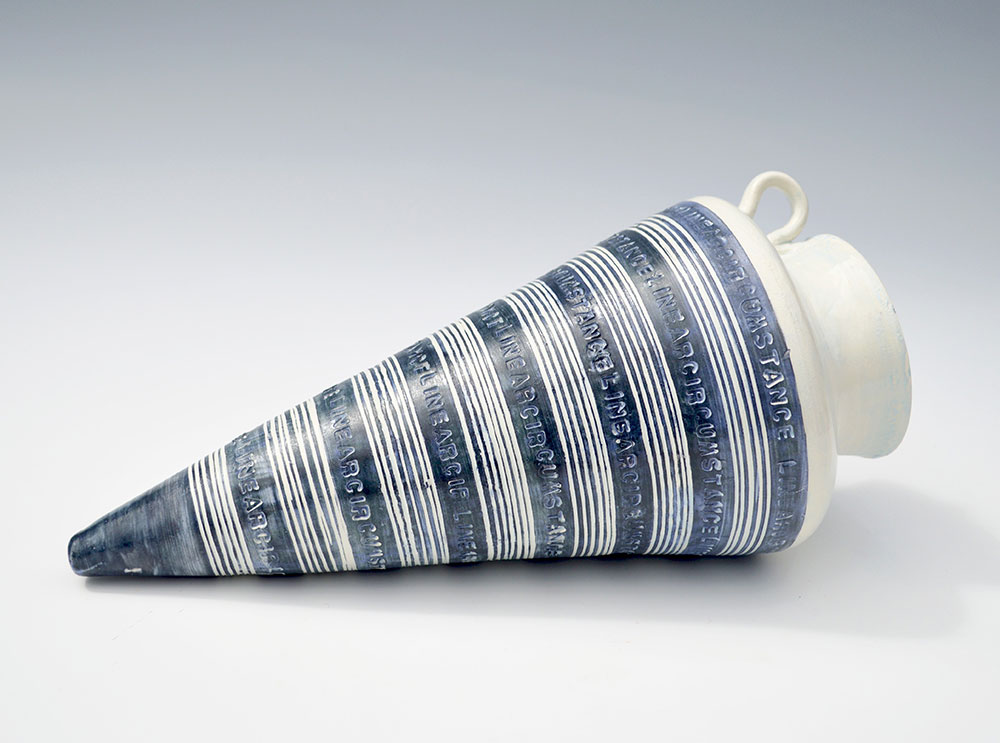
Words find their way into my sketchbooks and kick off the painful process of embodying and materialising them into a physical experience. I do a lot of scribbling and drawing and keep different sketchbooks which I always carry with me. I often go through them, since half-backed ideas stay dormant until they find their way to the world. The draft designs that seem more exciting and interesting end up on the studio walls and stay on the waiting line for their time to begin making.
SketchbookI always work in parallel on multiple pieces as they command different techniques, they require different materials, or even new skills to develop. For example, a line from a Jerome Rothenberg’s poem that reads ‘I turn a screw no one has turned before’ (1) can only work with hand-building clay that can be extruded into a coil that will twist as a spring and self-support without breaking. Whereas a used basketball would only work with a perfectly round glazed jar thrown on the potter’s wheel.
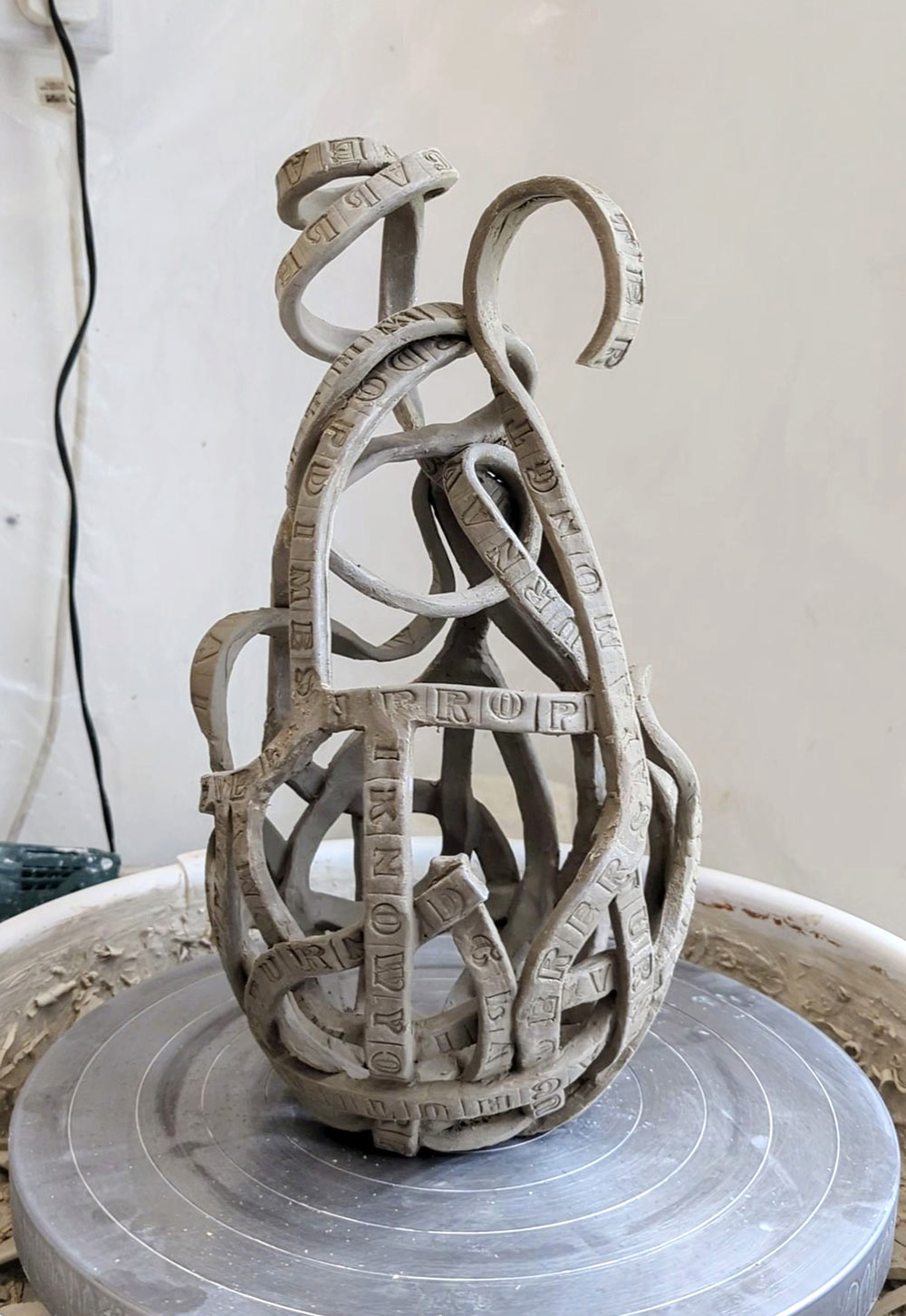
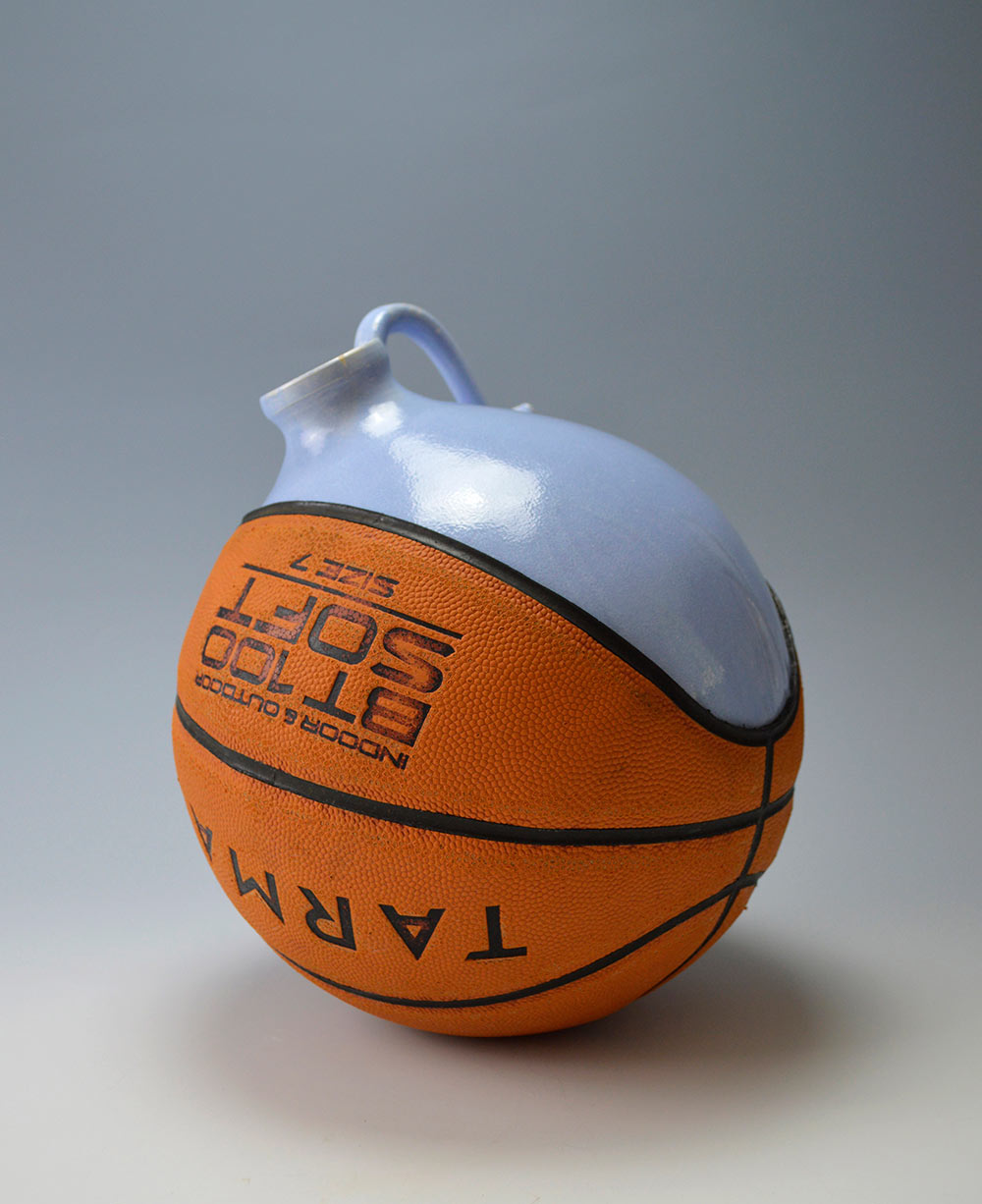
‘Tarmak’ 2023, 23 X 23 x 28 cm, glazed earthenware with basketball rubber. I find remarkably interesting the relationship between tarmac as a hard surface, ‘tarmak’ as a basketball brand, the softness of rubber and the fragility of the ceramic jar.*
I love clay because of its versatility and its expressive potential that gives me the chance to work in infinite different ways. Every new work calls for a different action that could be squeezing or carving, bending or breaking, cutting or assembling. It can be dissolved with water and transformed with fire into ceramic. And all these action-gestures and transformations can be ‘read’ on the final work.
‘Read my Mind-firing process’, one of the ceramic books during the firing process and finished work set-up outdoors:
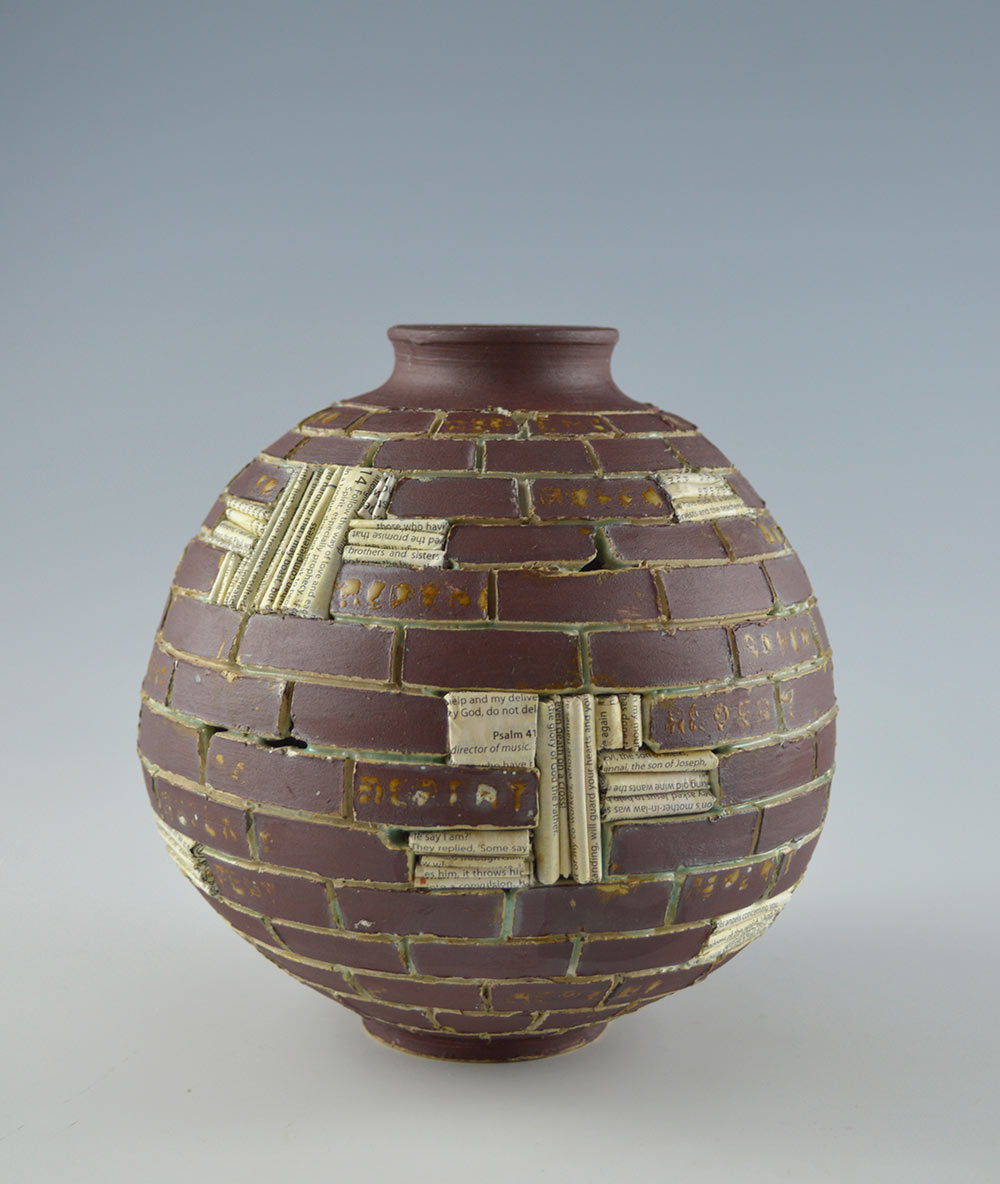
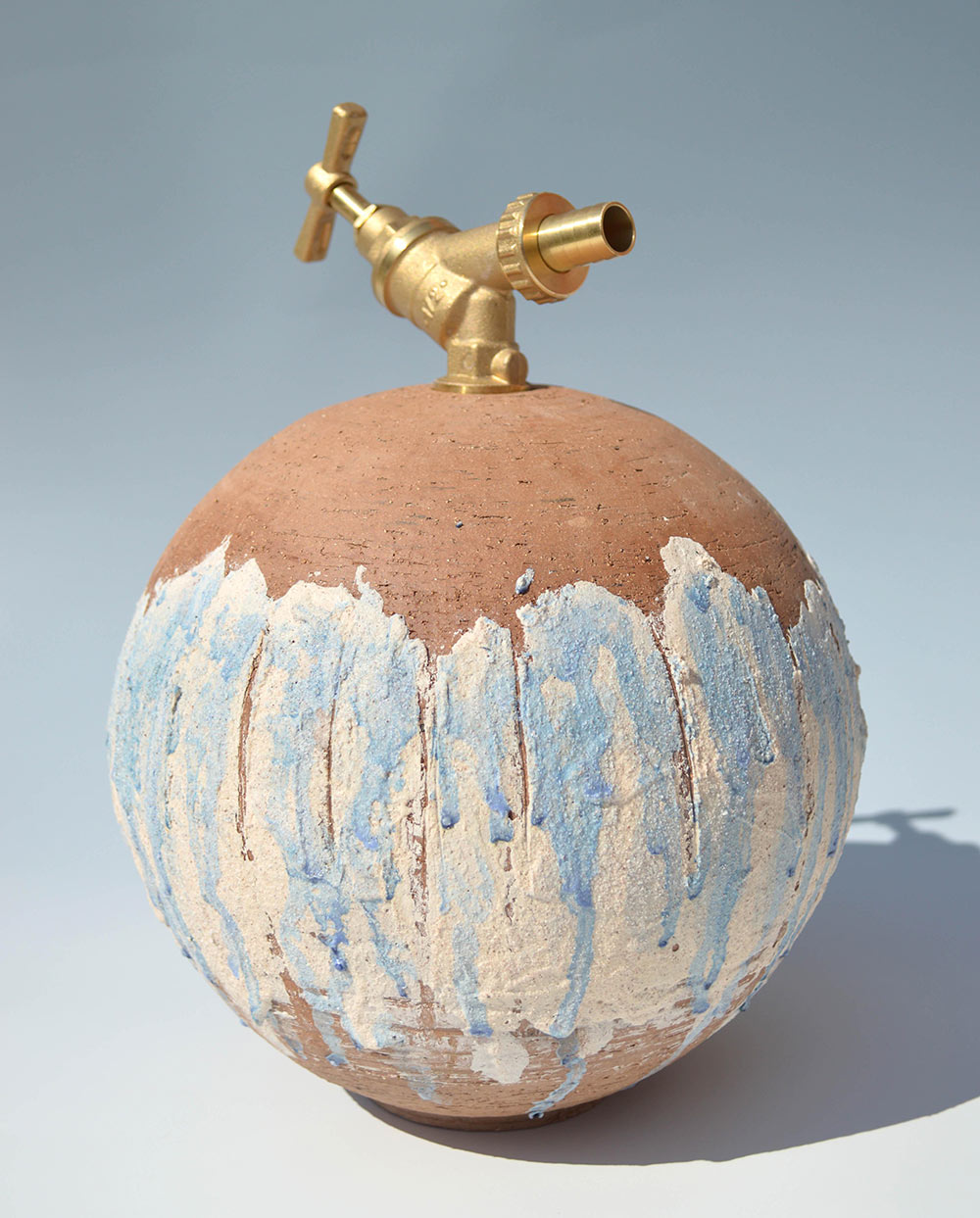
I believe that a successful artwork depends on the fine balance between the making actions, the material qualities and the way it is experienced. Having ‘one foot’ into the comfort of commonplace and ‘another’ into awkwardness and displacement is a perfect way to test the waters. As Bruce Nauman said: ‘If you deal only with what is known, you’ll have redundancy; on the other hand, if you deal only with the unknown, you cannot communicate at all. There is always some combination of the two, and it is how they touch each other that makes communication interesting’ (3)
Stathis Dimitriadis LG, 2024
www.stathis-dimitriadis.com
Notes:
* Read more about artwork, Tarmak on Renée Pfister Art & Gallery website
(1) ‘I Am the President of Regulation’ by Jerome Rothenberg, poetryfoundation.org
(2) ‘The Handle: An Aesthetic Study’ by Georg Simmel, 1911
(3) ’Please pay attention please: Bruce Nauman’s words’, The MIT press, 2003
Coming up:
– ‘The Art of Transformation: Ephemera Elevated’, Ackerman Studios, 45 Park Lane Hotel, London W1K 1PN, 24 May to 18 August 2024
– Carshalton Open Studios CAOS24, Venue#9, 19 Hill Road Carshalton SM5 3RA, on the weekends of 29/30 June & 6/7 July 11am-5pm
– European Poetry Festival, Collaborating with Panos Ghikas at the Austrian Cultural Forum, 28 Rutland Gate, London SW7 1PQ, London, 27th of June at 7pm
A Question of Process is a detailed portrait of the Group in action.
Here are links to all AQOP articles:
AQOP 1 1-5…..Angela Eames, James Faure Walker, Ece Clarke, Neil Weerdmeester, Ade Adesina
AQOP 2 6-8…..Alexandra Harley, Almuth Tebbenhof, Paul Tecklenberg
AQOP 3 9-11…Charlotte C Mortensson, Eric Fong, Judith Jones
AQOP 4 12-14 Aude Hérail Jäger, Stephen Carley, Beverley Duckworth
AQOP 5 15-16 Ian Parker, Micheál O’Connell / Mocksim
AQOP 6 17-19 Simon Reid, Genetic Moo, Alex Ramsay
AQOP 7 20-21 Eugene Palmer, Carol Wyss
AQOP 8 22-23 Tricia Gillman, Cadi Froehlich
AQOP 9 24-25 Stathis Dimitriadis, Emilia González Salgado

